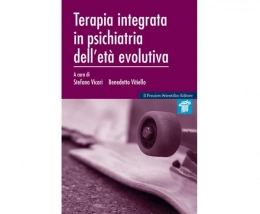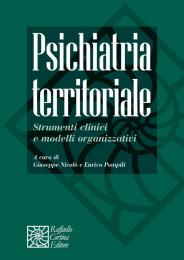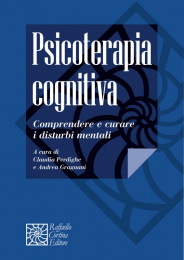Non ci sono recensioni
Cerebral Palsy in Infancy is a thought-provoking book which introduces a new way of thinking on the development and use of interventions. Relevant to current practice, it advocates early, targeted activity that is focused on increasing muscle activation, training basic actions and minimizing (or preventing) mal-adaptive changes to muscle morphology and function. The authors present recent scientific findings in brain science, movement sciences (developmental biomechanics, motor control mechanisms, motor learning, exercise science) and muscle biology. This knowledge provides the rationale for active intervention, underpinning the need for an early referral to appropriate services. The book features methods for promoting relatively intensive physical activity in young infants without placing a burden on parents which include assistive technologies such as robotics, electronic bilateral limb trainers and baby treadmills.
Cerebral Palsy in Infancy begins by specifying the guidelines for training and exercise, outlining the rationale for such intervention. It goes on to cover the fundamentals of neuromotor plasticity and the development and negative effects of limited motor activity on brain organization and corticospinal tract development. Neuromuscular adaptations to impairments and inactivity are discussed along with the General Movement assessment that can provide early diagnosis and prognosis, facilitating very early referral from paediatric specialists to training programs. The book ends with a section featuring various methods of training with the emphasis on preventing/minimizing muscle contracture, stimulating biomechanically critical muscle activity and joint movement.
An ideal clinical reference for those working to improve the lives of infants suffering from cerebral palsy.
|
Cerebral Palsy in Infancy targeted activity to optimize early growth and development By Roberta B. Shepherd, MA, EdD (Columbia), FACP, Honorary Professor, Physiotherapy, Faculty of Health Sciences, The University of Sydney, Australia |
|
Description: Cerebral Palsy in Infancy is a thought-provoking book which introduces a new way of thinking on the development and use of interventions. Relevant to current practice, it advocates early, targeted activity that is focused on increasing muscle activation, training basic actions and minimizing (or preventing) mal-adaptive changes to muscle morphology and function. The authors present recent scientific findings in brain science, movement sciences (developmental biomechanics, motor control mechanisms, motor learning, exercise science) and muscle biology. This knowledge provides the rationale for active intervention, underpinning the need for an early referral to appropriate services. The book features methods for promoting relatively intensive physical activity in young infants without placing a burden on parents which include assistive technologies such as robotics, electronic bilateral limb trainers and baby treadmills. Cerebral Palsy in Infancy begins by specifying the guidelines for training and exercise, outlining the rationale for such intervention. It goes on to cover the fundamentals of neuromotor plasticity and the development and negative effects of limited motor activity on brain organization and corticospinal tract development. Neuromuscular adaptations to impairments and inactivity are discussed along with the General Movement assessment that can provide early diagnosis and prognosis, facilitating very early referral from paediatric specialists to training programs. The book ends with a section featuring various methods of training with the emphasis on preventing/minimizing muscle contracture, stimulating biomechanically critical muscle activity and joint movement. An ideal clinical reference for those working to improve the lives of infants suffering from cerebral palsy. CONTRIBUTORS: Adel Abdullah Alhusaini (Saudi Arabia); David I. Anderson (USA); Nicolas Bayle (France); Roslyn Boyd (Australia); Giovanni Cioni (Italy); Diane L. Damiano (USA); Janet Eyre (UK); Linda Fetters (USA); Mary Galea (Australia); Andrew M Gordon (USA); Martin Gough (UK); Richard L Lieber (USA); Jens Bo Nielsen (Denmark); Micah Perez (Australia); Caroline Teulier (France). |
| Features: |
|
Table Of Contents:
Part 1: Introduction
1 The changing face of intervention in infants with cerebral palsy
Roberta Shepherd
Annotation A: Aspects of motor training
Roberta Shepherd
Part 2: Neuromotor Plasticity & Development
2 Corticospinal tract development and activity-dependent plasticity
Janet Eyre
3 Re-thinking the brain: New insights into early experience and brain development
Mary Galea
Part 3: Impairments & Neuromuscular Adaptations to Impairments & Inactivity
4 The syndrome of deforming spastic paresis: pathophysiology, assessment & treatment
Nicolas Bayle, Jean-Michel Gracies
5 Functional effects of neural impairments & subsequent adaptations in cerebral palsy
Annotation B: Findings from a series of studies of passive mechanical properties of muscle in young children with cerebral palsy
Adel Abdullah Alhusaini
6 Skeletal muscle changes due to cerebral palsy
Richard L Lieber, Lucas Smith
7 Early muscle development in children with cerebral palsy: the consequences for further muscle growth, muscle function, and long-term-mobility
Martin Gough, Adam P Shortland
Part 4: Early and Active Intervention to Optimize Growth, Development & Functional Motor Performance
8 Early diagnosis and prognosis in cerebral palsy
Giovanni Cioni, Vittorio Belmonti, Christa Einspieler
9 Effects of motor activity on brain and muscle development in cerebral palsy
Diane Damiano
10 The consequences of independent locomotion for brain and psychological development
David I Anderson, Joseph J Campos, Monica Rivera, Audun Dahl, Ichiro Uchiyama, Marianne Barbu-Roth
Part 5: Specific Methods of Motor Training for Infants
11 Training lower limb performance in early infancy: support, balance and propulsion
Roberta Shepherd
Annotation C: Kick Start: Using the mobile infant learning paradigm to promote early leg action
Linda Fetters
12 Treadmill training in early infancy- sensory & motor effects
Caroline Teulier, Marianne Barbu-Roth, David Anderson
13 Very early upper limb interventions for infants with asymmetric brain lesions
Roslyn Boyd. Micah Perez, Andrea Guzzetta
14 Constraint-induced therapy and bimanual training in children with unilateral cerebral palsy
Andrew M Gordon
15 Interactive technologies for diagnosis and treatment in infants with cerebral palsy
Jens Bo Nielsen



